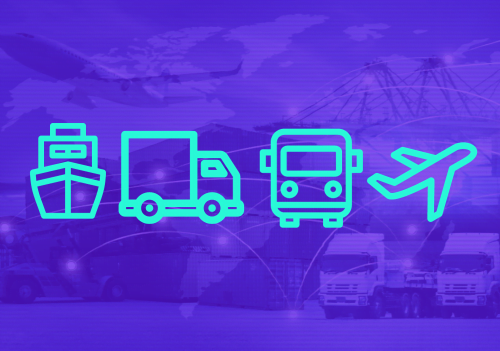Ville Koski is a graduate of the Certified Cyber Insurance Specialist (CCIS) training course, and upon his completion, he submitted an industry analysis of the transportation industry covering all things technological advancements, cyber risk, and how COVID-19 changed the transportation industry.
The transportation industry is a sector that deals with the movement of people and products, as well as transportation infrastructure. The industry includes companies such as airlines, trucking, railroads, shipping, and logistics firms. The image many people have of the industry is that is not very technologically focused. However, driven by changing consumer expectations and advancements in technology, the digital environment of the transportation industry has undergone significant transformation in recent years.
The digital landscape of the industry sector encompasses various aspects, including logistics, fleet management, passenger services, and more. Telematics Solutions are systems that provide real-time data on vehicle location, performance, and driver behavior, helping companies optimize routes, reduce fuel consumption, and improve safety. Internet of Things (IoT) sensors can monitor vehicle conditions, allowing for predictive maintenance and reducing downtime. AI-powered traffic analytics tools process traffic data to provide insights into congestion patterns and suggest route alternatives. Although these tools have increased efficiency they have opened up the transportation industry to significant cyber risk.
The Effects of Cyberattacks on the Transportation Industry
The transportation industry faces a wide range of cyber risks, many of which have become increasingly prominent with the growing use of digital technologies in the sector. These risks can have serious consequences for safety, efficiency, and financial stability, and many operators (especially the smaller and mid-sized ones) in the industry still underestimate the damages. Cyberattacks can disrupt transportation operations, including airlines, railways, shipping companies, and public transit systems. For example, ransomware attacks can lock critical systems and demand payment for their release, causing significant delays and financial losses. Furthermore, critical infrastructure, such as traffic control systems, can be targeted by different threat actors like cybercriminals or even nation-state-sponsored actors. Compromising these systems can lead to accidents, traffic congestion, and even loss of life.
In addition, companies in the transportation industry rely heavily on complex supply chains that extend across the globe. Cyberattacks on suppliers can have cascading effects. An attack on a key supplier could disrupt the production of vehicles, parts, or systems critical to transportation operations. Within that supply chain, The Internet of Things (IoT) devices used in transportation, such as sensors and tracking systems, can be vulnerable to cyberattacks. Unauthorized access to these devices can disrupt operations or provide attackers with valuable information. Find out more about third-party cyber risk and digital supply chains.
Lastly, cyberattacks on transportation systems can have environmental consequences, such as oil spills from compromised shipping vessels or disruptions in transportation systems.
How COVID-19 Exposed the Transportation Industry to Cyber Risk
The pandemic in 2020 had a major impact on many industries and the transportation industry was no different. Maritime and transportation companies, among many others, turned to working from home, which made the transportation industry much more vulnerable to cyberattacks. Naval Dome cited data suggesting that the number of attempted hacks against these companies increased by 400% between February and June of 2020. In addition to external threats, there are also insider threats. Employees or contractors with access to critical systems and data can pose a significant insider threat. Negligent or malicious actions by insiders can lead to data breaches or system disruptions.
In conclusion, transportation is considered critical infrastructure, and cyber risks in this sector can have serious consequences. This kind of critical infrastructure can be targeted by different threat actors like cybercriminals or even nation-state-sponsored actors. The potential for disruption, financial losses, and even safety risks has prompted many companies to invest in cybersecurity. Generally, the industry has become more aware of cybersecurity threats in recent years due to high-profile cyberattacks on major players and companies will continue to implement safety precautions to improve their cybersecurity.







